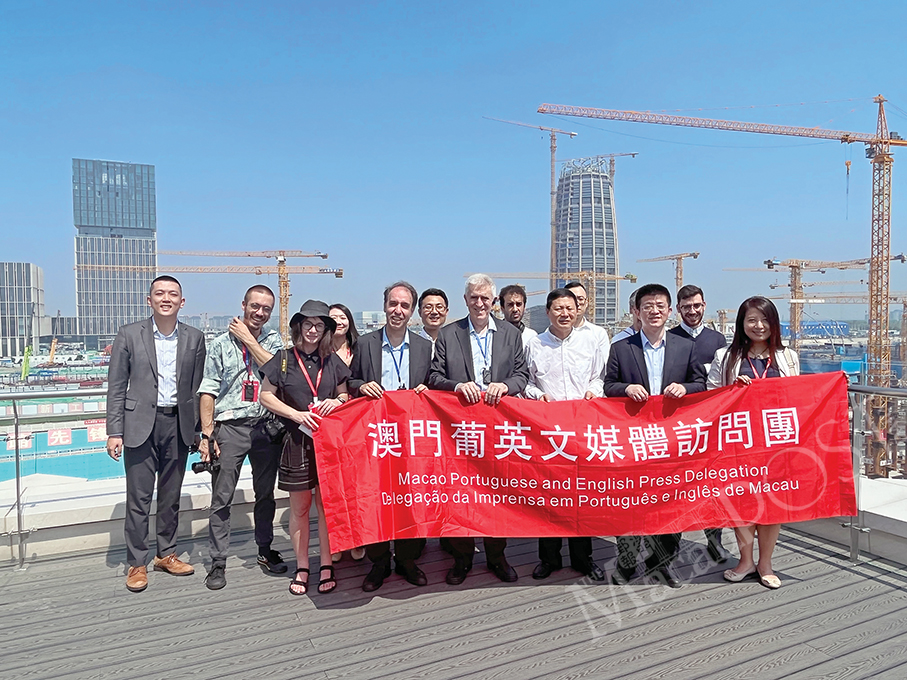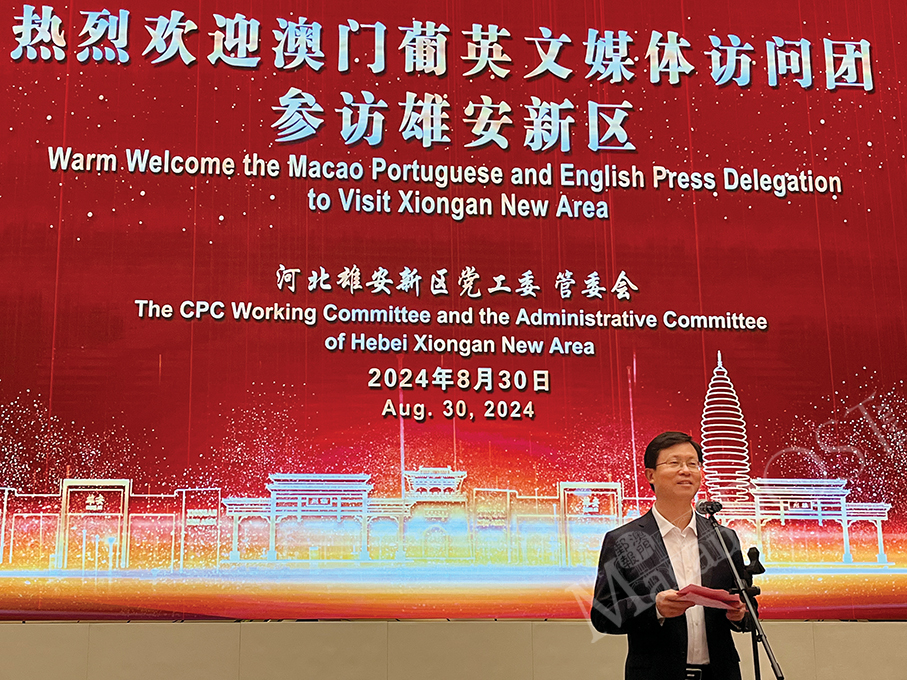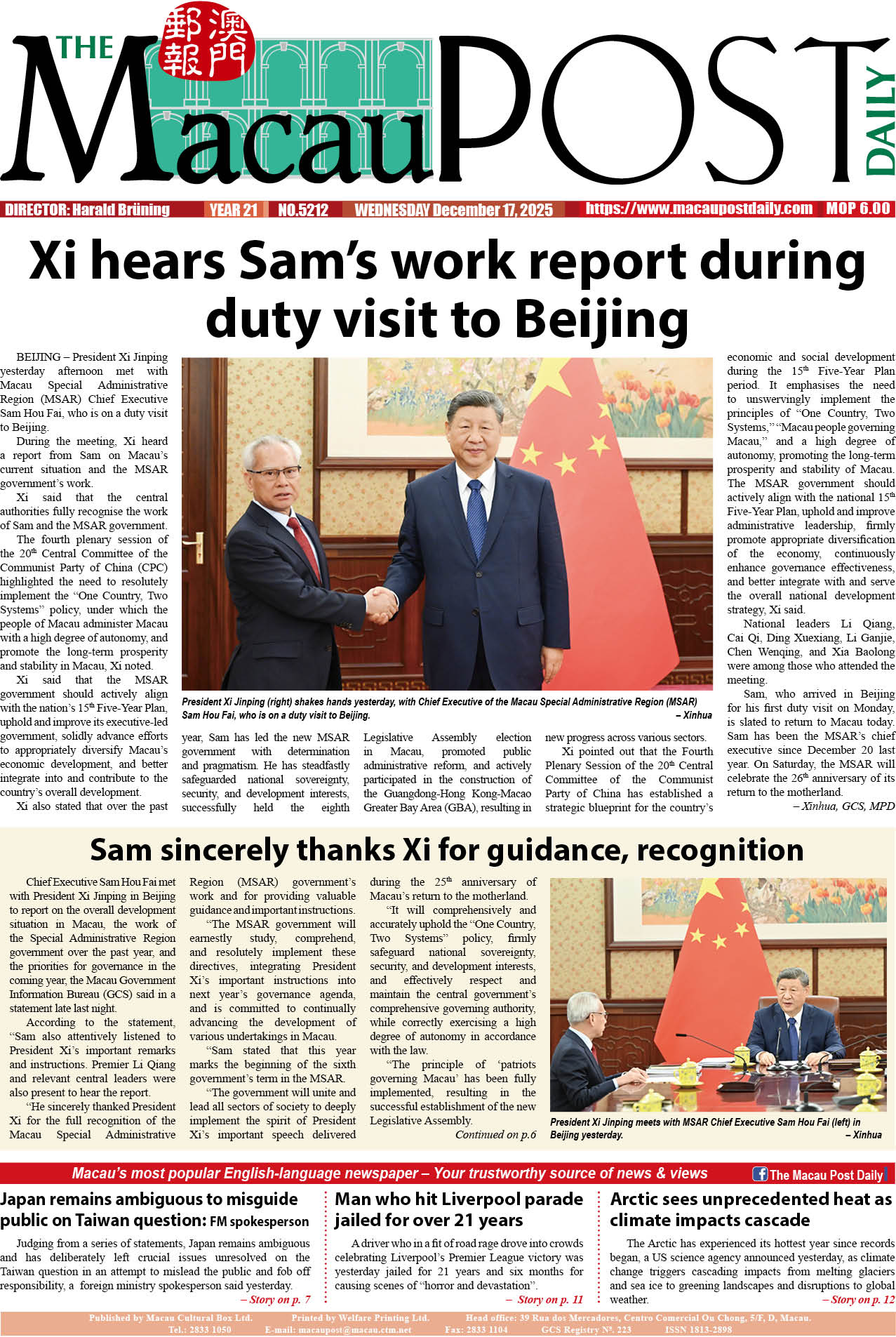At the invitation of the local Commissioner’s Office of the Foreign Affairs Ministry, representatives of Macau’s Portuguese- and English-language – media including The Macau Post Daily – visited last week two places in the Chinese mainland that represent both the nation’s ancient history and promising future – Xi’an and Xiong’an.
The delegation also included several journalists from the local Chinese-language media, such as Macao Daily News and Cable TV.
Both cities are testimony to China’s past, present and future – Shaanxi Province’s capital Xi’an (“Western Peace”), which has an urban history of over 3,000 years, and Xiong’an, also known as “City of the Future” whose development close to Beijing got off seven years ago.
As each city is extraordinarily important in its own right, I have decided to write a two-part editorial about our four-day trip. While this one focuses on Xiong’an, I will devote the second one to Xi’an.
Xiong’an New Area located 100 kilometres southwest of Beijing is a mega-development project directly overseen by the central authorities, i.e., the Central Committee of the Communist Party of China (CPC) and the State Council.
Upon the initiative of President Xi Jinping, the project was officially launched in April 2017. Even though not even a decade has passed since its inception, we could clearly see during our two-day visit to the about 1,700-km2 area, which exceeds the Hong Kong Special Administrative Region’s land area by about one-third, that the central authorities’ aim of completing the urban construction in 2035 and overall development project in 2049 is on the right track – and all this irrespective of the 2020-2022 COVID-19 pandemic.
Incidentally, the mammoth project’s overall completion is scheduled to coincide with the 100th anniversary of the founding of the People’s Republic of China (PRC) and the 50th anniversary of the establishment of the Macau Special Administrative Region (MSAR) – two particularly meaningful events in China’s “political calendar”.
Xiong’an New Area covers the counties of Xiong, Rongcheng and Anxin in the Beijing-Tianjin-Hebei economic development triangle. Its name is a compound of the three counties’ name. The counties’ farmers have been provided with generous resettlement packages, including spacious flats in purpose-built high-rises in the area, senior officials told us during the visit. Currently, Xiong’an has some 1.5 million residents, or more than double Macau’s population. The target is to reach a population of five million, many if not most of them highly-qualified human resources – that’s what nowadays is generally referred to as “talents” – needed to run a top-notch modernisation and innovation hub and smart city.
On Friday, we were given a detailed introduction to the undertaking by Wang Jiping, deputy director-general of the Leading Group for the Planning and Construction of Xiong’an New Area of the CPC Hebei Provincial Committee. What impressed me – and, I am quite sure, all the other members of our delegation – was his emphasis on developing an environmentally-friendly “green and blue” smart city that offers its residents a 15-minute living circle, an urban planning concept in which most daily necessities and services, such as work, shopping, education, healthcare, sports, and leisure can be easily reached by a 15-minute walk, bike ride, or public transit ride from any point in the city – also known as 15-minute city concept.
I do hope that we in tiny Macau would be able to become a 15-minute city before long…
The “green and blue” development objective is another praiseworthy aim that our local government planners should never lose sight of. Xiong’an is blessed with an abundance of natural water resources (nine rivers and a multitude of ponds and lakes) and a wide diversity of plants such as trees, shrubs and grasses. While I was admiring the emerging metropolis from a high-rise lookout tower, the concept of a futuristic garden city came to mind.
The obvious aim is for Xiong’an to become many things in one – an eco-friendly, beautiful, high-tech, smart hub representing the nation’s ongoing modernisation and innovation drive in the run-up to the PRC’s centennial.
One of the various objectives of the project – certainly one of the largest ever in history – is to move “non-core” functions of the nation’s capital to Xiong’an, such as state-owned enterprises’ major facilities, central government entities and R&D offices.
The project also includes a fully integrated transport concept such as a major, centrally located interchange for high-speed and intercity trains as well as other modes of passenger transport. This is another area Macau could certainly learn from. I am convinced that without a fully integrated public and private passenger and freight transport system, any city would find it virtually impossible to advance its innovation and modernisation process.
We did arrive from Beijing Daxing International Airport at Xiong’an “in style” by high-speed train, and we continued our tour with a five-hour high-speed train ride to Xi’an. High-speed train travel is one of the many aspects of China’s reform, modernisation and innovation drive that the whole nation can take great pride in. Most countries, including some of the West’s supposedly most developed nations – there is no need to mention which ones I am alluding to – still force their citizens and tourists to travel on trains dating back to the early or mid-20th century.
I have come to the conclusion that Xiong’an New Area is an “of-the-people, for-the-people, by-the-people” project, based on the central authorities’ determination to improve the Chinese people’s living conditions and livelihoods by combining reform, opening-up, modernisation and innovation with environmental protection, social welfare and economic sustainability. That’s not an easy feat as it requires determination and hard work.
Incidentally, the Xiong’an project got off the ground with over 200,000 workers who continued working there even during the pandemic, and there are currently some 100,000 workers there. Any large-scale project (which concerning Xiong’an sounds like an understatement) is prone to encounter some difficulties, and there are going to be, as one would expect, bumps in the road towards its conclusion. I am, however, confident that the central authorities are able to overcome all of them.
Unlike other major urban developments overseas, Xiong’an does not depend on foreign expertise, labour and funding. This is, literally speaking, a home-made undertaking. This does not mean, of course, that foreign expert views and sci-tech are not welcome.
The visit has shown as that Xiong’an is nothing less than future in the making before our eyes.
Just one adjective suffices to wrap up my evaluation of the Xiong’an New Area project: impressive.
Superb organisation, stupendous camaraderie
I cannot avoid concluding the first part of my editorial by expressing my gratitude for the superb organisation of the trip by our friends from the local Foreign Affairs Ministry Commissioner’s Office, Gao Yuan and Chen Zhenhua, as well as our tour guides Afey Wong and Leo Wu.
And, last but not least, I also would like to thank my fellow journalists for their stupendous camaraderie during the two-city journey, which included lots of mutual learning, interesting exchanges of views, a strong dose of humour, lots of laughter, and erudite discussions about the culinary delights – including of the liquid kind – that our hosts in Xiong’an and Xi’an offered as.
The camaraderie included, naturally, also the delegation’s non-journalist members. Thank you all!
– Harald Brüning

Delegation members of Macau’s Portuguese- and English- language media, as well as mainland officials, pose for a group photo at Xiong’an New Area’s East-West Axis Dispatch and Command Centre in Xiong’an on Friday. – Photos: Maria Cheang Ut Meng

Wang Jiping, Deputy Director-General of the Leading Group Office for the Planning and Construction of Xiong’an New Area of the CPC Hebei Provincial Committee; Member of the Working Committee of Xiong’an New Area of the CPC Hebei Provincial Committee gives a speech at the welcoming lunch for the delegation of Macau’s Portuguese- and English- language media on Friday in Xiong’an.







